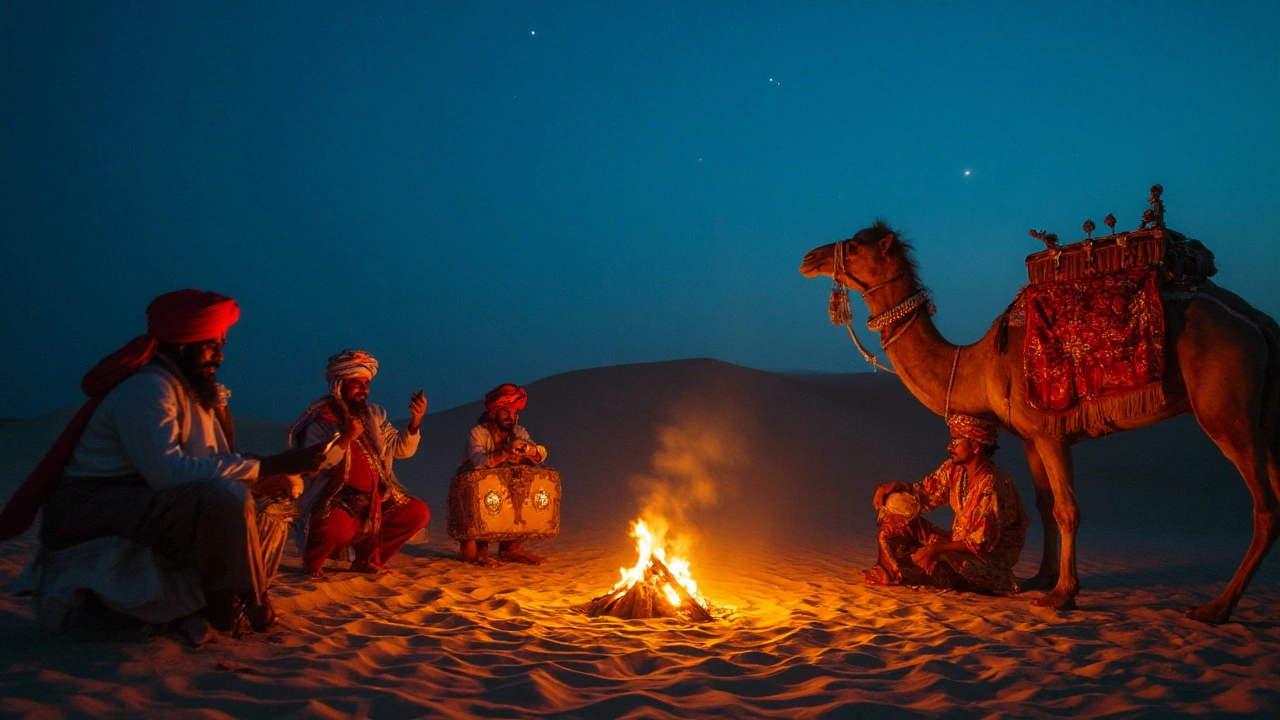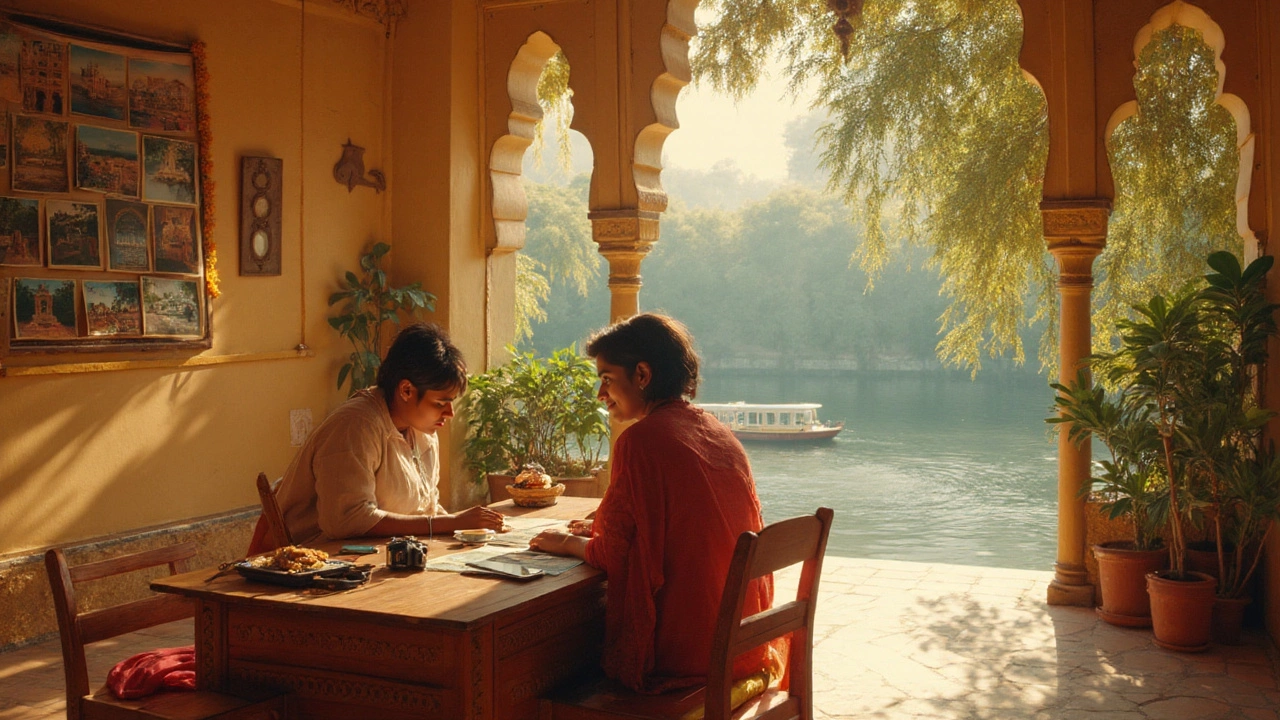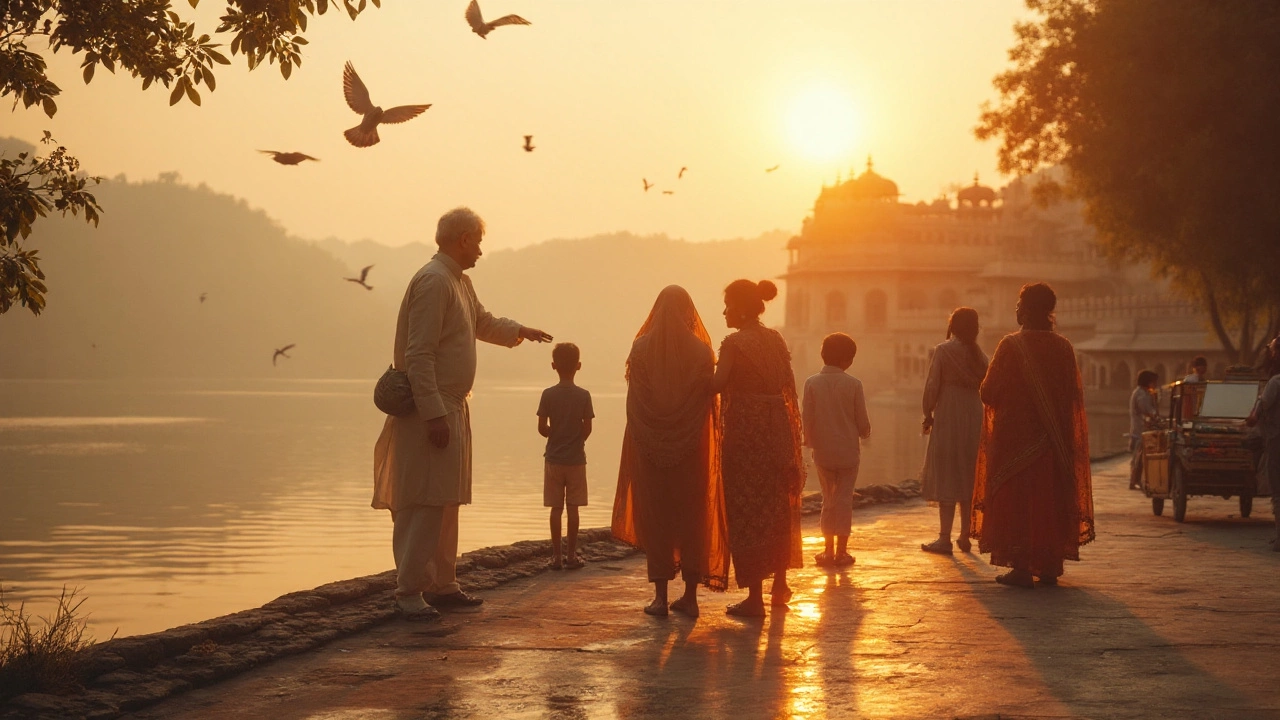If you had to pick one Indian state that feels like a living museum-palaces glittering at sunset, folk music drifting through desert towns, and festivals that swallow whole cities-go with Rajasthan. That said, the “best” state depends on the culture you want to soak in. Temples with ancient Dravidian architecture? Tamil Nadu. Sacred rivers and Mughal grandeur? Uttar Pradesh. Backwater rituals and classical dance? Kerala. This guide gives you a clear answer, then shows strong alternatives so you choose the right trip for your vibe and time.
For most travelers, the top pick for cultural tourism in India is Rajasthan. Here’s why-and exactly when another state beats it.
Rajasthan is a northwestern Indian state known for Rajput forts, royal palaces, desert festivals, and living craft traditions, anchored by cities like Jaipur, Udaipur, Jodhpur, and Jaisalmer.
TL;DR
- Quick answer: Rajasthan is the most famous state for cultural tourism in India-forts, palaces, festivals, crafts.
- Choose Tamil Nadu for temple architecture; Uttar Pradesh for Varanasi’s rituals and Agra’s Taj Mahal.
- Kerala shines for classical dance (Kathakali), Ayurveda, and temple festivals; Gujarat for Rann Utsav and stepwells.
- For UNESCO-heavy itineraries, consider Madhya Pradesh (Khajuraho, Sanchi) and Karnataka (Hampi).
- Best season: October-March for most states; check festival calendars to time your trip.
Why Rajasthan is the cultural crown
Rajasthan concentrates royal heritage, folk arts, and dramatic landscapes in a tight, traveler-friendly loop. You can step from the pink facades of Jaipur to the blue lanes of Jodhpur, then the golden sandstone of Jaisalmer-each city with a distinct identity and story.
The state’s UNESCO roster is proof of density and depth. The Hill Forts of Rajasthan, inscribed in 2013, cover Amber (Jaipur), Chittorgarh, Kumbhalgarh, Ranthambore, Gagron, and Jaisalmer-six fortified complexes that map Rajput power, water systems, and defense planning. Jaipur itself became a UNESCO World Heritage City in 2019 for its 18th-century urban planning that blends Vastu Shastra with astronomy and trade needs. If you’re a birder, Bharatpur’s Keoladeo National Park (1985 UNESCO inscription) adds a wildlife chapter to a culture-first trip.
Festivals keep traditions alive in public spaces. The Pushkar Camel Fair (usually in November) turns a sacred lake town into an open-air cultural carnival: livestock trading, folk performances, and devotional rituals. Gangaur and Teej celebrate seasons and marital harmony through processions and handcrafted icons. You’ll hear Manganiyar and Langa folk music at dusk courtyards, and see Kalbeliya dance-inscribed by UNESCO as Intangible Cultural Heritage in 2010-performed in dunes and heritage hotels.
Cuisine and craft tell the rest. Dal baati churma, laal maas, and ker sangri fuel you between block-print studios in Bagru, blue pottery in Jaipur, and miniature painting in Udaipur. Many havelis are now living museums or boutique stays, so the architecture isn’t sealed behind velvet ropes-you eat, sleep, and wake inside heritage.
The best alternatives by travel style
Not everyone wants forts and deserts. Here are top contenders that rival Rajasthan, depending on your interest.
Uttar Pradesh is a north Indian state that blends Mughal heritage with sacred Hindu geographies, centering on Varanasi, Agra, and Lucknow.
Why pick it: Varanasi’s dawn aarti on the Ganges is one of India’s defining rituals. Agra’s Taj Mahal (UNESCO, 1983) pairs with Agra Fort and Fatehpur Sikri for a powerhouse Mughal trio. Lucknow layers in Awadhi cuisine and chikankari embroidery. If you want both devotion and imperial architecture, this is a tight, easy-to-plan circuit.
Tamil Nadu is a south Indian state famed for Dravidian temple architecture, classical Bharatanatyam dance, and Carnatic music.
Why pick it: The Great Living Chola Temples-Brihadeeswarar in Thanjavur, Gangaikonda Cholapuram, and Airavatesvara in Darasuram-are a UNESCO set (inscribed 1987, extension 2004) with soaring vimanas and exquisite bronze craft. Madurai’s Meenakshi temple is a day-long spectacle of rituals, while the December music season in Chennai draws classical arts lovers from everywhere.
Kerala is a southwest Indian state known for backwaters, Ayurveda, temple arts like Kathakali and Theyyam, and spice routes.
Why pick it: Watch a Kathakali performance where makeup becomes ritual; catch Theyyam in North Kerala’s laterite shrines; ride a kettuvallam (houseboat) through backwaters that frame village life. Thrissur Pooram (April-May) is a drums-and-elephants cultural blockbuster. It’s a softer, greener palette of heritage.
Gujarat is a western Indian state showcasing stepwells, Indus Valley sites, textiles, and the white salt desert of Kutch.
Why pick it: Rani ki Vav (UNESCO, 2014) is a subterranean sculpture gallery. Dholavira (UNESCO, 2021) opens a window to Harappan urban planning. The Rann Utsav turns a salt flat into a cultural tent city with crafts from Ajrakh to Rogan. Somnath and Modhera bring historic temple narratives; Ahmedabad (UNESCO World Heritage City, 2017) wraps it in an old-city fabric of pols and havelis.
Madhya Pradesh is a central Indian state rich in rock shelters, Buddhist stupas, and temple sculpture-often called the “heart of India.”
Why pick it: Khajuraho’s Chandela-era temples (UNESCO, 1986) are a masterclass in stone carving and sacred iconography. Sanchi’s Great Stupa (UNESCO, 1989) anchors early Buddhist art. Bhimbetka rock shelters (UNESCO, 2003) push you back to prehistory. Add Indore and Bhopal for food and museums; Orchha for a quiet medieval riverside town.
Karnataka is a south Indian state where Vijayanagara, Hoysala, and Wodeyar legacies meet in stone and ceremony.
Why pick it: Hampi (UNESCO, 1986) sprawls across boulders with market streets, waterworks, and temples from a lost capital. The Hoysala temples of Belur, Halebidu, and Somanathapura (UNESCO, 2023) showcase filigreed soapstone carvings. Mysuru’s Dasara turns palaces and processions into a 10-day cultural theater each autumn.
West Bengal is an eastern Indian state blending colonial-era Kolkata, literary salons, Baul music, and Shakta festivals.
Why pick it: Durga Puja in Kolkata was inscribed by UNESCO as Intangible Cultural Heritage in 2021-pandal art, community rituals, and city-wide creativity. Add Shantiniketan’s Tagore legacy and the terracotta temples of Bishnupur, plus colonial architecture along the Hooghly.
Quick comparison: which state fits which traveler?
| State | Signature heritage | UNESCO highlights | Key festivals | Best season | Ideal for |
|---|---|---|---|---|---|
| Rajasthan | Rajput forts, havelis, desert towns | Hill Forts (2013), Jaipur City (2019) | Pushkar Fair, Gangaur, Teej | Oct-Mar | First-time culture trips; photography |
| Uttar Pradesh | Mughal monuments, sacred ghats | Taj Mahal (1983), Agra Fort, Fatehpur Sikri | Dev Deepawali, Ram Navami | Oct-Mar | Rituals + architecture in 1 trip |
| Tamil Nadu | Dravidian temples, classical arts | Great Living Chola Temples | Margazhi Music Season, Panguni Uthiram | Nov-Mar | Temple architecture lovers |
| Kerala | Backwaters, temple arts, Ayurveda | Western Ghats biosphere sites nearby | Thrissur Pooram, Theyyam season | Oct-Mar | Slow culture + nature mix |
| Gujarat | Stepwells, Harappan sites, textiles | Rani ki Vav (2014), Dholavira (2021), Ahmedabad City (2017) | Rann Utsav, Navratri Garba | Nov-Feb | Archaeology + craft safaris |
| Madhya Pradesh | Temple sculpture, Buddhist heritage | Khajuraho, Sanchi, Bhimbetka | Khajuraho Dance Festival | Oct-Mar | UNESCO collectors |
| Karnataka | Vijayanagara ruins, Hoysala art | Hampi (1986), Hoysala Temples (2023) | Mysuru Dasara | Oct-Mar | Architecture + royal pageantry |
| West Bengal | Colonial heritage, Shakta festivals | Durga Puja (ICH, 2021) | Durga Puja | Oct | Festival-first travelers |
How to choose: a simple decision guide
- First trip to India, want “palaces and color”? Pick Rajasthan.
- Short on time, want an icon-heavy loop? Do Uttar Pradesh (Varanasi + Agra).
- Temple architecture > everything else? Tamil Nadu.
- Want culture with nature and wellness? Kerala.
- Archaeology and crafts as your core? Gujarat.
- UNESCO-hopping across periods? Madhya Pradesh or Karnataka.
- Must-have one massive festival? West Bengal (Durga Puja) or Mysuru (Dasara).

Essential facts and credible signals
UNESCO inscriptions anchor cultural value: Jaipur (2019), Hill Forts of Rajasthan (2013), Taj Mahal (1983), Great Living Chola Temples (1987/2004), Hampi (1986), Rani ki Vav (2014), Dholavira (2021), Hoysala Temples (2023), Khajuraho (1986), Sanchi (1989), Bhimbetka (2003). UNESCO also lists Intangible Cultural Heritage such as Kalbeliya dance (2010) and Durga Puja in Kolkata (2021). The Archaeological Survey of India maintains hundreds of protected monuments across these states, and the Ministry of Tourism’s domestic stats consistently show Rajasthan, Uttar Pradesh, and Tamil Nadu among top draws for heritage circuits.
Sample 5-day itineraries by state
Short trips can still deliver strong cultural arcs. Here are realistic, efficient outlines.
- Rajasthan (Jaipur-Jodhpur): Day 1 Jaipur Old City and Hawa Mahal; Day 2 Amber Fort at opening + stepwell at Panna Meena + block-print workshop; Day 3 drive to Jodhpur via Chand Baori (Abhaneri) if up for a detour; Day 4 Mehrangarh Fort + blue lanes + evening folk set; Day 5 Bishnoi village craft visit + fly out.
- Uttar Pradesh (Varanasi-Agra): Day 1 Varanasi ghats by boat; Day 2 Sarnath + silk weavers; Day 3 fly to Agra, Mehtab Bagh at sunset; Day 4 Taj Mahal at dawn + Agra Fort; Day 5 Fatehpur Sikri + return.
- Tamil Nadu (Madurai-Thanjavur): Day 1 Madurai temple rituals; Day 2 morning puja + food walk; Day 3 Thanjavur Brihadeeswarar Temple + bronze-casting; Day 4 Darasuram Airavatesvara; Day 5 musical instruments workshop in Thanjavur.
- Kerala (Kochi-Backwaters): Day 1 Fort Kochi heritage walk; Day 2 Kathakali backstage + performance; Day 3 Alleppey houseboat; Day 4 village canoe + Ayurveda session; Day 5 Theyyam (seasonal, North Kerala) or Kochi Muziris Biennale (biennial, if dates match).
- Gujarat (Ahmedabad-Patan-Kutch): Day 1 pols of old Ahmedabad; Day 2 Adalaj stepwell; Day 3 Rani ki Vav + Patola weaving; Day 4-5 Rann Utsav with craft villages (Bhujodi, Nirona).
- Madhya Pradesh (Khajuraho-Orchha): Day 1 Western Group of Temples; Day 2 dance festival (seasonal) or Panna artisans; Day 3-4 Orchha palaces, cenotaphs, temple evening aarti; Day 5 Betwa river walk.
- Karnataka (Hampi-Mysuru): Day 1 Virupaksha and bazaar ruins; Day 2 royal enclosure + coracle at sunset; Day 3 Hoysala detour to Somanathapura; Day 4-5 Mysuru palace, markets, and if Dasara season-processions.
Related concepts you’ll bump into
Golden Triangle tours connect Delhi, Agra, and Jaipur into a first-timer’s super-route-Mughal capitals meeting Rajput Jaipur in one loop. Intangible heritage pops up everywhere: Kalbeliya dance in Rajasthan, Durga Puja artistry in Kolkata, Theyyam rituals in Kerala, and Kathak/Bharatanatyam as classical dance forms from the north and south respectively. Handloom and crafts create natural shopping detours-Kanchipuram silk (Tamil Nadu), Kutch embroidery (Gujarat), chikankari (Uttar Pradesh), blue pottery (Rajasthan), and Channapatna toys (Karnataka). Street food maps culture to your plate-kachori in Jaipur, kachori-jalebi in Varanasi, filter coffee in Chennai, and seafood thalis along the Malabar coast.
Practical planning tips
- Best months: October-March for desert/north; November-March for Tamil Nadu and Kerala. April-June is hot inland; July-September is monsoon but great for off-season pricing (and lush Kerala).
- Festival timing: Durga Puja (Sept-Oct, West Bengal), Mysuru Dasara (Sept-Oct), Pushkar Fair (Oct-Nov), Thrissur Pooram (Apr-May), Margazhi Music Season (Dec-Jan). Book stays 2-3 months ahead.
- Etiquette at temples: Cover shoulders/knees, leave footwear at stands, ask before photos. Carry a light scarf; small cash helps for offerings and shoe attendants.
- Monument tickets: Major sites offer digital tickets; carry ID. Many ASI monuments have separate entry for foreign and domestic visitors-arrive early for sunrise visits.
- Getting around: Trains connect hubs; short flights save time (Jaipur-Jodhpur, Varanasi-Agra via Delhi, Chennai-Madurai). For rural craft circuits, hire a car with driver.
- Food and water: Eat where turnover is high; go bottled or filtered water. Vegetarian options are abundant nearly everywhere; Jain meals are easy to find in Rajasthan and Gujarat.
- Responsible experiences: Choose community-led performances and fair-pay craft visits. Avoid staged animal rides; camel safaris are better when operators follow welfare standards and limit loads.
Next steps and troubleshooting
- If heat strikes: Shift outdoor forts to early morning and evenings; move mid-day to museums, stepwell interiors, or craft studios.
- If festival crowds overwhelm: Book skip-line tickets where available; time major pandals/temples at opening or late night; use local guides who know quieter entries.
- If language is a worry: English is widely spoken in tourism hubs; download offline maps and a phrase list. Guides double as translators.
- If sites are closed: Keep a backup list of nearby secondary monuments (e.g., if Agra Fort timing slips, see Itmad-ud-Daulah); many cities have excellent stepwells and smaller havelis.
- Want to combine states: Classic pairs include Rajasthan + Uttar Pradesh (Jaipur-Agra-Varanasi) or Tamil Nadu + Kerala (temples + backwaters). Build around your entry/exit flights.

Frequently Asked Questions
Which single state is most famous for cultural tourism in India?
Rajasthan. It concentrates royal forts, palaces, living crafts, and marquee festivals within easy travel distances. UNESCO designations like the Hill Forts of Rajasthan (2013) and Jaipur (2019) reinforce its status. For first-time cultural trips, it’s the most complete “wow” per day.
If I want temple architecture more than palaces, where should I go?
Tamil Nadu. The Great Living Chola Temples (Thanjavur, Gangaikonda Cholapuram, Darasuram) and the Meenakshi complex in Madurai offer deep temple immersion, rituals from dawn to night, and classical arts like Bharatanatyam and Carnatic music.
Where do I combine spiritual rituals with an iconic monument?
Uttar Pradesh. Start with Ganga aarti and sunrise boat rides in Varanasi, then head to Agra for the Taj Mahal, Agra Fort, and Fatehpur Sikri. It’s a clean 4-5 day loop with high cultural impact.
Which state is best for festivals I can actually plan a trip around?
West Bengal for Durga Puja (Sept-Oct) if you want a city-wide art and ritual explosion. Rajasthan’s Pushkar Fair (Oct-Nov) and Karnataka’s Mysuru Dasara (Sept-Oct) are also trip-worthy. Book stays well in advance for these dates.
What’s the best time to visit for cultural travel?
October to March. Weather is pleasant, outdoor monuments are comfortable, and festival calendars peak. Tamil Nadu and Kerala remain good into March; desert and central India heat up quickly from April.
Is Kerala more nature or culture?
Both. Backwaters and greenery frame the setting, but culture runs deep-Kathakali, Koodiyattam, and Theyyam rituals, plus Ayurveda traditions. If you want a gentle pace with nightly performances, it’s a solid pick.
Which state wins for archaeology and ancient urbanism?
Gujarat and Madhya Pradesh. Gujarat offers Dholavira (Indus Valley) and Rani ki Vav (stepwell architecture). Madhya Pradesh layers Khajuraho, Sanchi, and Bhimbetka for a time-travel arc from prehistory to medieval temple art.
Can I combine Rajasthan with the Taj Mahal and Varanasi in one trip?
Yes. A classic 9-12 day route is Jaipur → Agra (Taj Mahal) → Varanasi, with flights or fast trains bridging gaps. It stitches royal heritage with Mughal architecture and river rituals without backtracking too much.
Is it okay to photograph rituals and people?
Ask first, especially in temples and during private rituals. Many performances welcome photos after the show. Avoid flash in sanctums and be mindful of queues and worshippers.
How far in advance should I book during big festivals?
Two to three months ahead is safe for Durga Puja, Mysuru Dasara, and Pushkar Fair. In smaller towns with limited stays, the earlier the better-especially for boutique heritage hotels.
UNESCO World Heritage is a global designation recognizing cultural and natural sites of outstanding value; many Indian states use these listings to anchor heritage circuits and conservation.
